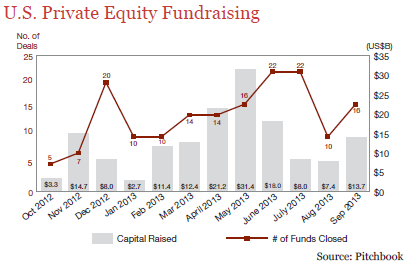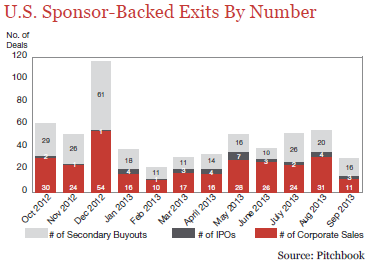Toby Myerson is a partner in the Corporate Department at Paul, Weiss, Rifkind, Wharton & Garrison LLP and co-head of the firm’s Global Mergers and Acquisitions Group. The following post is based on a Paul Weiss memorandum.
In the last edition of the Digest, we discussed the issues and alternatives faced by private equity sponsors when taking a portfolio company public. An IPO exit can be an attractive option for the appropriate portfolio company, but a private company sale at the right valuation is often more compelling because it provides certainty to a sponsor about the price that it will realize and maximizes the sponsor’s internal rate of return.
Although a private company sale may be an attractive exit, the traditional means of securing a selling sponsor’s post-closing indemnification obligations may decrease a sponsor’s IRR. This issue of the Digest discusses a number of strategies employed, and issues faced, by sponsors when they agree to indemnify buyers of their portfolio companies. These strategies include (i) preparing for a private company sale and sharing liability among other equityholders, (ii) utilizing alternative mechanisms to the traditional escrow account, such as representation and warranty insurance, fund guarantees and letters of credit and (iii) mitigating the risk of liabilities beyond those negotiated and assumed by the sponsor seller in the sale contract.
Preparing for a Private Company Sale and Sharing Liability among Other Equityholders
Prior to any sale transaction, and preferably early in the life of the investment, a sponsor should ensure that it has taken appropriate steps to control the terms of any sale where other equityholders, including management and minority co-investors, are present.
These steps include the following:
- The portfolio company’s governing documents should include customary “drag-along” rights (including a waiver of applicable dissenters’ rights in a merger) so that the sponsor will be able to deliver 100% of its portfolio company to a prospective buyer without the potential risk of other equityholders attempting to extract hold-up value or negotiate additional terms;
- The governing documents should also include the sponsor’s right to holdback or reserve a portion of any sale proceeds and specify that each equityholder will be required to bear its pro rata portion of any such holdback or escrow as well as providing the sponsor with flexibility to guarantee, instead of holding back, its pro rata share (maximizing its IRR);
- Any option or other equity incentive plans should be drafted clearly to delineate the rights of the company and the plan participants in a change of control; and
- The sponsor should enter into contribution arrangements with the other equityholders and equity plan participants to ensure that those parties are required to bear their pro rata portion of any indemnities paid by the sponsor.
Maximizing Returns
In a typical private company sale, the sponsor is required to deposit a portion of its sale proceeds into escrow as security for post-closing indemnification obligations. Because escrow proceeds generate minimal returns and may be held in escrow for a meaningful period of time, most sponsors view escrows as an inefficient means of securing their indemnification obligations. Thus, sponsors have increasingly explored alternative strategies to reassure buyers that there will be a sufficient back-stop for their indemnification claims, while concurrently enabling sponsors to return capital to their investors more quickly. These alternative strategies include representation and warranty insurance, fund guarantees and letters of credit.
“Rep and Warranty” Insurance. One alternative available to a sponsor seeking to maximize the upfront purchase price on a private company sale is representation and warranty insurance. “Rep and Warranty” insurance provides coverage for indemnification obligations arising from the breach of representations and warranties given to the insured party in the contract. Such an insurance policy can be an attractive option because payment of the applicable premium upfront may eliminate or reduce the need for an escrow, as well as the risk that the sponsor will need to claw-back any proceeds. The scope of representations and warranties covered by the policy and the applicable premium, deductible and cap are generally negotiable and can be varied based on transaction-specific needs. The ultimate goal of the parties is to limit gaps in coverage between the policy and the indemnification provisions in the sale contract. However, utilizing a Rep and Warranty policy will inevitably result in at least three types of gaps in coverage: first, as the name suggests, Rep and Warranty policies only cover breaches of representations and warranties and not covenants; second, specified liabilities uncovered in due diligence are generally excluded from coverage; and third, any claim of which the buyer (in the case of a buyer-side policy) or the seller (in a seller-side policy) is deemed to have knowledge either at the time of signing or closing is not covered. Thus, the sponsor may nonetheless be required to provide a limited escrow to cover items that fall outside the scope of coverage under a Rep and Warranty policy. Further, the cost of a Rep and Warranty policy will vary depending on the amount of exposure that the sponsor will continue to have for items that are covered by the policy.
Fund Guarantee. A second alternative strategy is for the sponsor to provide a fund guarantee. As in the case of Rep and Warranty insurance, a fund guarantee can be used alone or as security for indemnification obligations that continue beyond the term of a proposed escrow or holdback. Whether a fund guarantee will be a viable option will depend on, among other factors, the underlying fund documents of the sponsor. The sponsor should ensure that its fund documents permit it to provide a fund guarantee and further, that such documents would not require the sponsor to hold back a portion of sale proceeds in order to provide the guarantee as this would erode if not eliminate the main benefit of this alternative–i.e., the ability to distribute a greater portion of the purchase price to investors upfront. As a fund guarantee is only provided by the sponsor, the sponsor should enter into contribution arrangements with other recipients of the purchase price so that it has the right to recoup from such participants their respective pro rata share of any indemnification payments paid under the fund guarantee. The biggest issue facing a buyer considering a fund guarantee is determining the creditworthiness of the guarantor. Sponsors should keep in mind that a buyer will want to confirm that the guarantor has sufficient liquid assets both at the time of the guarantee and during the applicable survival period for the indemnification. This diligence exercise may not be easy or practical for a number of reasons, including difficulty in valuing non-liquid assets and assessing whether the guarantor’s remaining assets will be sold.
Letter of Credit. A third alternative would be for a sponsor to provide the buyer with a letter of credit naming the buyer as beneficiary to secure any indemnity obligations of the sellers. As with the other options described above, such a letter of credit may be used alone or with an escrow or holdback. The efficacy of a letter of credit will, similar to a fund guarantee, depend on whether fund documents permit the sponsor to deliver a letter of credit without reserving any portion of the funds available for drawdown and whether the issuing bank requires the sponsor to commit to maintain such a reserve. The likelihood that the bank will require a reserve should be reduced if it has an established commercial relationship with the sponsor, and may, for example, be satisfied with the sponsor providing the bank with a fund guarantee (subject to the considerations described above). Similar to a fund guarantee, the letter of credit is typically supported only by the sponsor and therefore the use of contribution arrangements described above is important. It is important to note that the mechanics for collecting on a letter of credit are similar to that of an escrow given that the bank will not want to be responsible for making an improper payment.
Mitigating the Risk of Extra-Contractual Liabilities
As a final note, even where a sponsor’s indemnification obligations have been carefully negotiated and appropriate Rep and Warranty insurance or other back-stops have been implemented, the sponsor should be careful to limit its exposure to the risk of extra-contractual liabilities–that is, liabilities that arise outside of and despite the negotiated limitations in the contract, such as fraud and tort claims.
While the extent to which these provisions will be effective will vary from jurisdiction to jurisdiction, the sponsor should consider including the following provisions in the contract to minimize the risk of these liabilities:
- A provision whereby the buyer disclaims reliance on, and even the existence of, any documents, statements or otherwise that are not explicitly set forth in the contract;
- Exclusive remedy provisions that cover all claims arising under the contract and related transactions;
- An integration clause which states that the contract sets forth all understandings and agreements between the parties and supersedes any prior understandings; and
- Mandating that representations and warranties (and closing certificates) regarding the portfolio company and its business come solely from the portfolio company (rather than the sponsor or any equityholders of the company).





 Print
Print